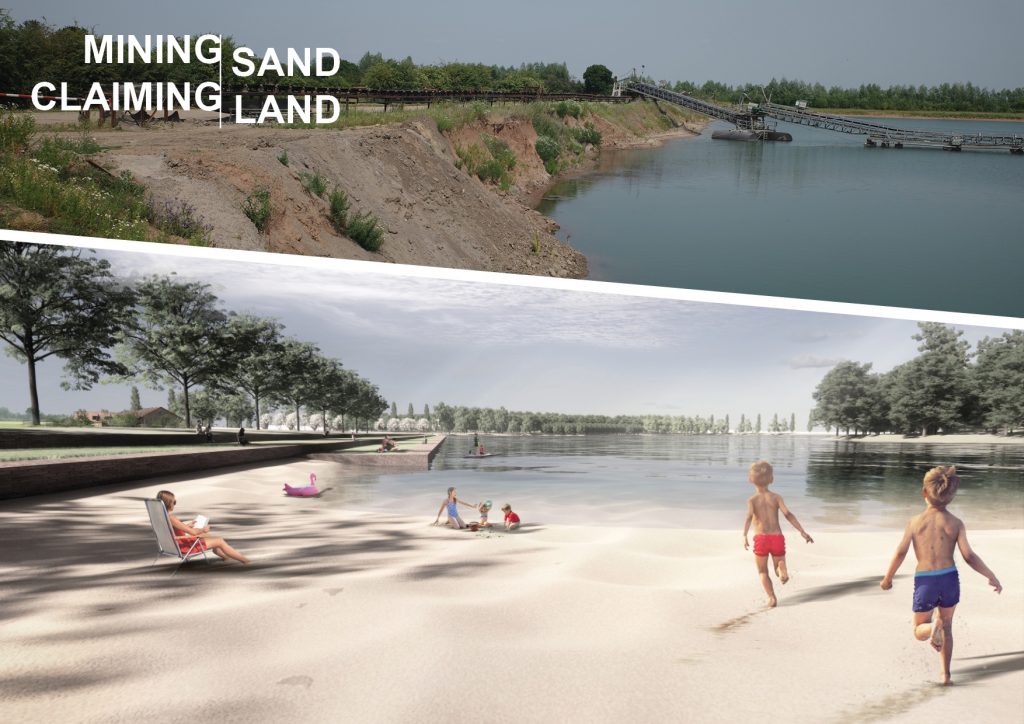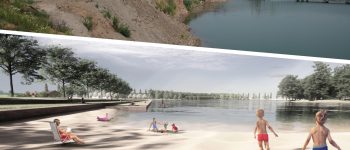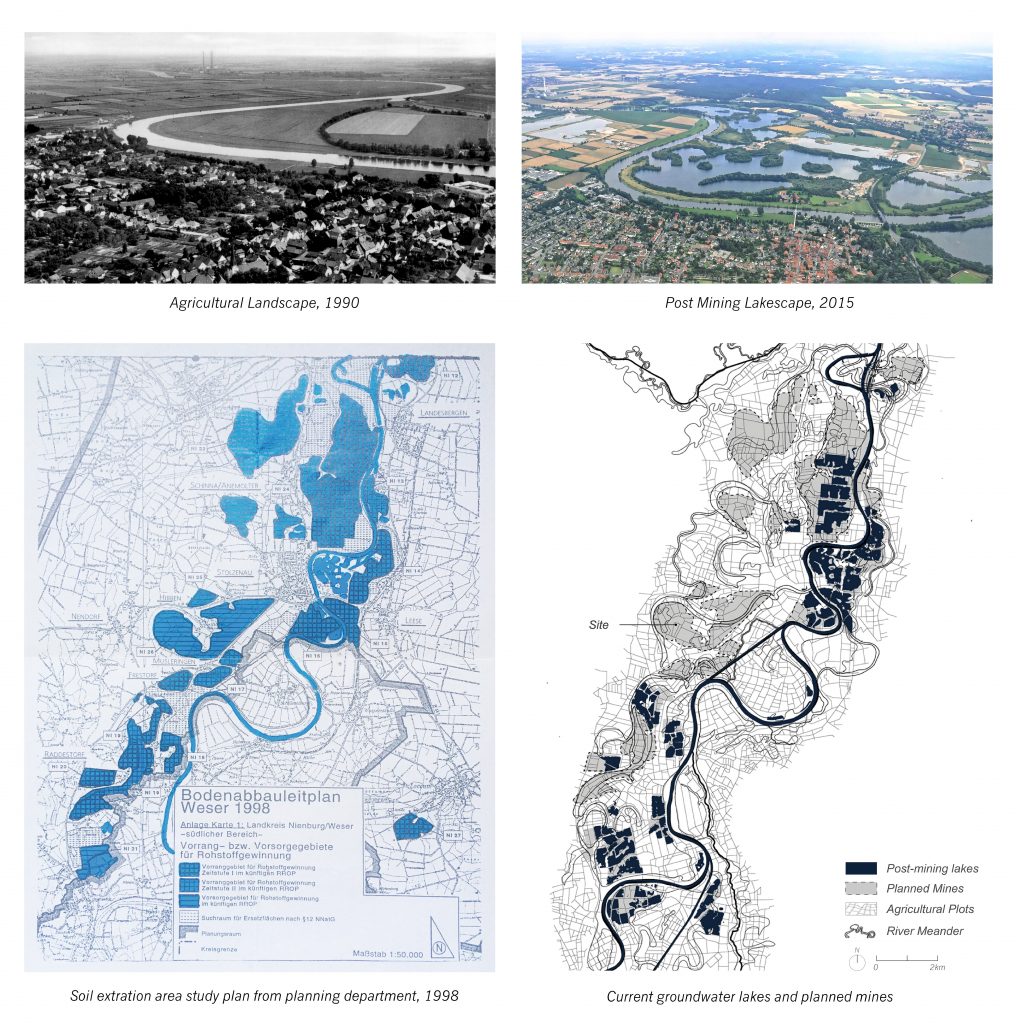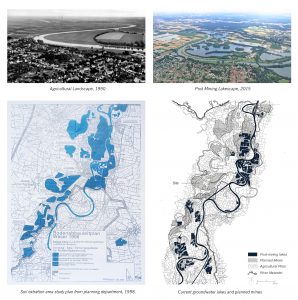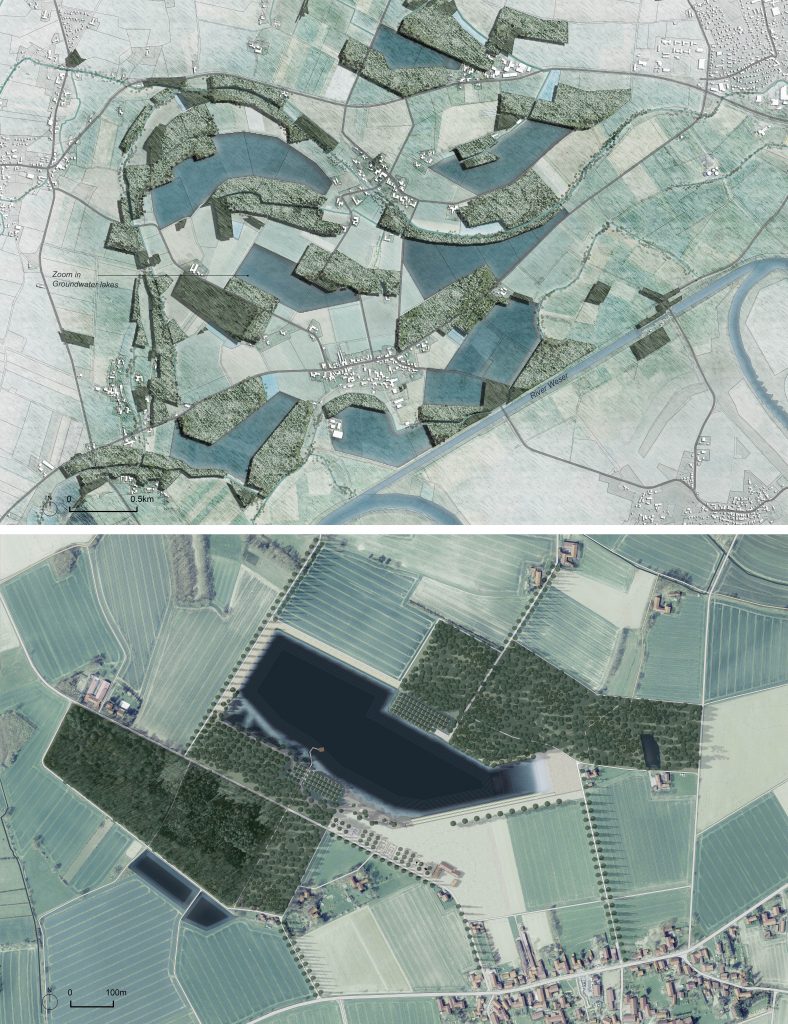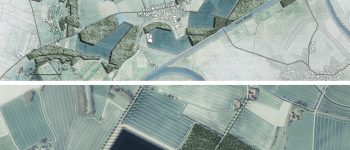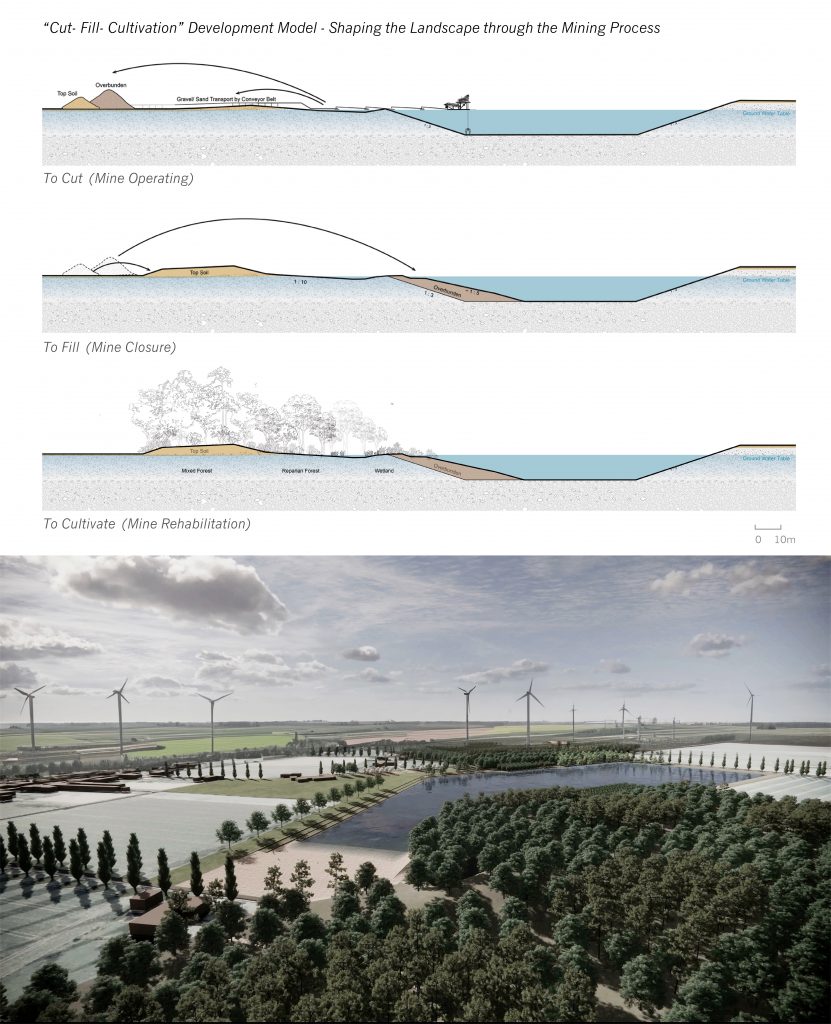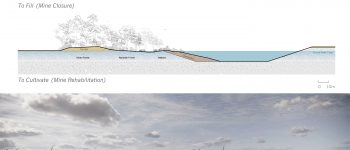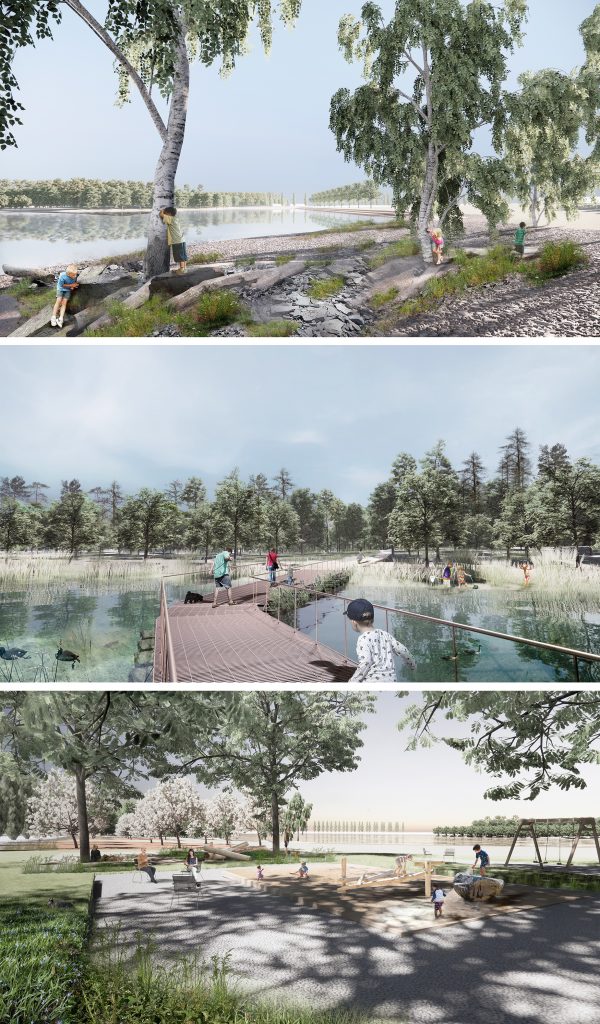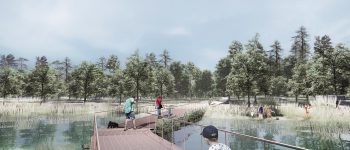Sand is the Earth’s most heavily extracted resource, primarily for construction purposes. This extraction involves digging below the groundwater table, forming large groundwater lakes as a post-mining landscape. Typically, these lakes are left abandoned. However, this project in Mittelweser, Germany, challenges this convention by intervening before the negative consequences of mining occur and prompt positive transformation by crafting a post-mining performative landscape that brings climate resilience, new activities and cultural identity to the local community, which has contributed its land and materials to the society.
The Mittelweser floodplain is the largest sand extraction area in northern Germany. Mining companies acquired farmland for sand extraction, dug below the groundwater table and resulted in creation of 500 hectares of groundwater lakes.The mining (lake) area is projected to double by 2035. Meanwhile, Lower Saxony is also the worst-affected state in the flooding event in December 2023. The region faced historic rainfall of 166 mm, more than double of the average. Together, the region raises concerns about increasing flood events, declining groundwater levels, increasing post-mining lakes and impending arable land loss.
In response, this project proposes a landscape framework that unites the scattered post-mining lakes collectively into a landscape infrastructure that benefits local villagers. This approach utilizes only 50% of the current mining plan, allowing farming to coexist with the transformed landscape. The new landscape structure connects groundwater lakes with existing ditches to collect rainwater, expands forests along the lakes to create riparian flood detention zones and introduces sealed irrigation ponds for dry seasons. The master plan is aesthetically and administratively guided by farming plots which offers flexibility in implementation and echo the dynamics of the river meander.
The project capitalizes on the mining process itself, developing the “Cut-Fill-Cultivation” rehabilitation model, which integrates the mining process with the landscape formation process to shape desired terrain. Departing from conventional mining practices that prioritize extraction yield and minimize edge treatment with 1:3 slope ratios.
This project employs a wider range of slope ratios to shape diverse water edges that respond to groundwater fluctuations, fostering various habitats and recreational opportunities for humans and wildlife. Such a rehabilitation model signifies a shift towards regenerative landscapes, promoting resilience and sustainable land use.
The project reclaims materials extracted from mining and local farms for rehabilitation. These locally sourced materials give character to five newly designed water edges: Sandy Beach, Brick Terrace , Rocky Shore , Willow Strips and Riparian Wetland. Together, they form the Water Edge Park, a cultural landscape that pays homage to the area’s farming and industrial heritage. Villagers can gather at this park, watching children play in the sand playground, shaded by blossoming cherry trees—a celebration of growth and harvest in the company of others.
In conclusion, this project in Mittelweser, Germany, serves as a strategic model for regions facing the impact of mining on their landscapes. It demonstrates how mining restoration can enhance climate resilience and benefit both the public and ecology while preserving the landscape’s identity by utilizing the mining process itself. It invites a fresh perspective on post-industrial landscapes, envisioning them as assets rather than liabilities.
The project works with various scales, including an overall blue-green system, development model, and detailed resources utilization strategy. Firstly, the project proposes a master landscape mining framework that unites scattered post-mining lakes into a blue-green landscape infrastructure for flood remediation, rainwater collection, and groundwater recharge.
Secondly, a "Cut-Fill-Cultivation" regenerative model is developed, transforming post-mining landscapes by integrating the extraction process as a landscape process to shape desired terrain, reclaim materials, and foster habitats. Departing from conventional mining practices that prioritize extraction yield and minimal edge cultivation, this model signifies a shift towards regenerative landscapes, promoting resilience and sustainable land use.
Lastly, the project reclaimed materials extracted from mining and recycled local farms for rehabilitation, shaping diverse water edges to respond to groundwater fluctuations, fostering various habitats, and creating recreational opportunities for the local community.

